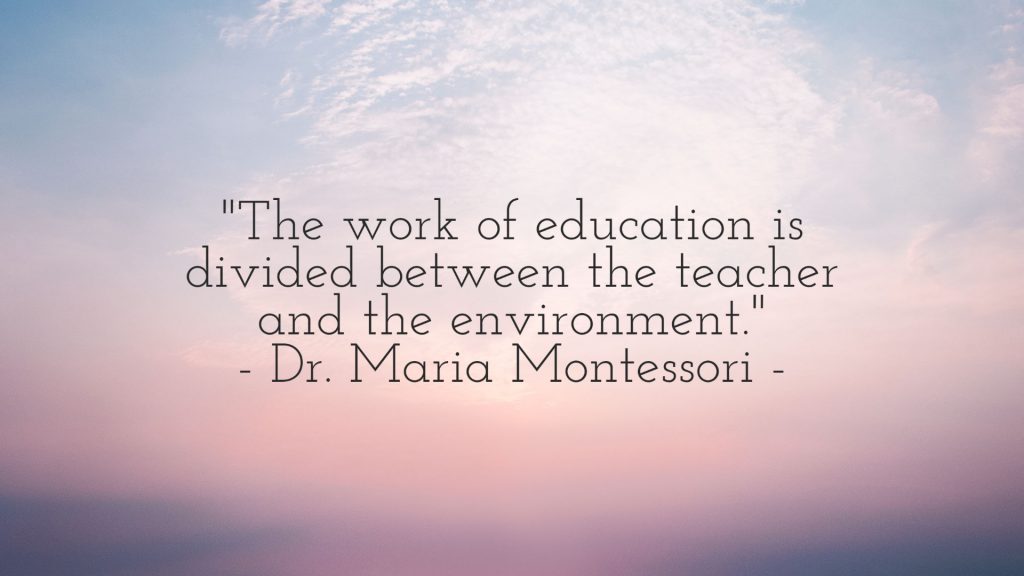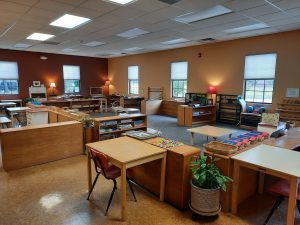The Leadership Year: Why Staying for Kindergarten Is So Important
February 16, 2022The Transition to Preschool: When Is Your Toddler Ready?
February 24, 2022
If you’ve been researching Montessori schools for your child, you may have heard the term “authentic Montessori” mentioned. But did you know that any school can call itself a Montessori school, even if it isn’t Montessori at all? There is no copyright on the name, nor is there one single governing body. So how do you know if a school really is an authentic Montessori school?
The Five Core Components of Authentic Montessori Schools
Thankfully, there are ways to tell whether a school is authentically Montessori or not. There are five core components of Montessori education to look for. Read on to find out more about them.
Highly Trained Teachers
The first thing you’ll want to determine is whether a school’s teachers have been Montessori certified. A certified teacher is trained in the Montessori materials and methods of teaching them, carefully following the philosophy created by Dr. Maria Montessori herself. They understand the importance of allowing children to develop naturally and independently. Look for teachers who have received MACTE-accredited training. Here at the Montessori Center of Downriver, all lead teachers are Montessori certified, and we are one of less than 20 schools in the state to meet the criteria set by the Michigan Montessori Society.
Mixed-Age Classrooms
An authentic Montessori classroom will always be mixed age as this is a foundational aspect of the Montessori Method. At the Montessori Center of Downriver, our classrooms are divided into Toddler (18 months to 3 years) and Preschool/Kindergarten (3-6 years). In a Montessori elementary school, children will likely be grouped from 6-9 years and 9-12 years. This is done because younger children are able to learn from their older peers, and older children are thus able to reinforce their knowledge of things they have already learned. Older children are also able to develop their leadership skills.
Uninterrupted Work Cycles
Another core element of an authentic Montessori school is the uninterrupted work period. Children are able to follow their interests and choose a work they would like to complete. They may work alone, in groups, or with a teacher, but they require the time and space to work without interruption. The work cycle in a Montessori classroom is between two and three hours for toddlers and preschoolers. An authentic Montessori will also meet five times a week for optimal learning. This period of uninterrupted learning helps children develop both independence and concentration. This is why all of our programs at the Montessori Center of Downriver meet five days a week.

A Beautifully Prepared Environment
Montessori classrooms are designed to be both functional and aesthetically pleasing. The materials used in an authentic Montessori classroom were designed by Dr. Montessori to teach a single concept or skill, and the materials build upon one another. For example, children are first introduced to the pink tower, which teaches them about differences in dimension, and then they are later introduced to the red rods, building upon that knowledge and teaching them the visual discrimination of length.
Child-Directed Learning
Dr. Maria Montessori designed the classroom environment to allow children freedom of movement and choice. In an authentic Montessori school, the teacher is an observer, gently guiding students as needed and ensuring that the classroom environment is peaceful and respectful. It is the children themselves who direct and control their learning, choosing the work that sparks their interest and following it to completion. In doing so, children gain a sense of autonomy and independence, as well as an intrinsic sense of motivation and desire to learn.
Ready to See an Authentic Montessori Class in Action?
Many people are surprised at how peaceful and quiet the classroom is the first time they see an authentic Montessori class in action. Children are observed doing their work quietly, intently, and happily–in small groups or alone. They may be seen caring for their classroom environment by sweeping or washing dishes, or they may be seen cutting fruit or vegetables for a classroom snack. Children and teachers treat each other respectfully and work together as a community. It is truly a sight to see! Please contact our office if you’d like to schedule a Zoom tour.